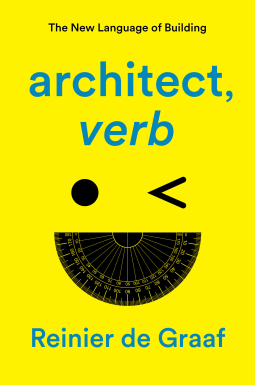Curious about the book because of its title and cover, I was unprepared for the depth and scope of the discussion Reiner De Graaf leads through “architect, verb.” It is truly a fascinating book from start to finish. Establishing itself with history (if broad knowledge isn’t your thing, don’t let this opening put you off), it is full of facts I was entirely unaware of about building communities around the world in the past.
Upon the foundation of what has and hasn’t worked, De Graaf moves on to define key concepts that architecture and community design influence directly such as placemaking and the modern community requirements introducing new and exciting ways we can improve lives in creative and sustainable ways. I love the concept of selling “well-being” as part of the architectural concept, and the exploration in the book is great food for thought.
… placemaking refers to a collaborative process by which we can shape our public realm in order to maximize shared value.1 Placemaking is a core value of sustainability. Maintaining liveable urban environments is essential to protecting natural resources and the landscape from further destruction.…Placemaking is the process of reconnecting people to place and creating meaningful and connected communities for people to thrive in.5 Placemaking always begins with the community and the users.
The book also succinctly and objectively identifies and explores what has failed to improve community, what should be avoided going forward, and the pitfalls of some of the innovations.
“Seattle currently counts as the third most gentrified city in the US, where rising property values and rents increasingly push original residents out of their neighbourhoods and a movement for rent control is enjoying increasing support. More and more often, the third way simply proves a front for the old ways.”
A favourite for me throughout is the theme of inclusion and true community. The unpacking of what Carehaus, for example, works and can be imitated is inspiring.
“Tolerance attracts talent; talent, in turn, is the crucial basis for the emergence of new creative technologies.”
If you are looking for a thought-provoking and uplifting read, this is for you! I highly recommend it, five out of five on the enJOYment scale!
I received a complimentary copy of the book from Verso Books (US) through NetGalley. Opinions expressed in this review are completely my own.
From the back cover:

The Hidden Rules of Architecture: how to build world-class, award winning, creative, innovative, sustainable, liveable and beautiful spaces that foster a sense of place and well being
Leading architect Reinier de Graaf De Graaf punctures the myths behind the debates on what contemporary architecture is, with wit and devastating honesty. Architecture, it seems, has become too important to leave to architects. No longer does it suffice to judge a building solely by its appearance, it must be measured, and certified. When architects talk about “Excellence,” “Sustainability,” “Well-being,” “Liveability,” “Placemaking,” “Creativity,” “Beauty” and “Innovation” what do they actually mean?
In architect, verb. De Graff dryly skewers the doublespeak and hot air of an industry in search of an identity in the 21st century. Who determines how to measure a “green building”? Why is Vancouver more “liveable” than Vienna? How do developers get away with advertising their buildings as promoting “well-being”? Why did Silicon Valley become so obsessed with devising “creative” spaces or developing code that replaces architects? How much revenue can be attributed to the design of public space? Who gets to decide what these measurements should be, and what do they actually mean? And what does it mean for the future of our homes, cities, planet?
He also includes a biting, satirical dictionary of “profspeak”: the corporate language of consultants, developers and planners from “Active listening” to “Zoom Readiness.”

